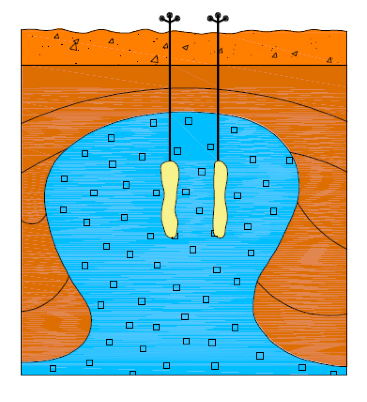Cavern construction and cavern storage
In order to store large volumes of gaseous or liquid media from the energy and chemical industries, underground storage facilities were developed as an alternative to above-ground containers and tanks. In the case of natural gas storage, for example, such facilities can contain quantities of between a few million and 20 billion cubic metres.
When storing liquids, the range extends from some tens of thousands to as much as 120 million cubic metres. If the special underground conditions are taken into account, underground storage can be realised virtually all over the earth.
Underground storage is the containerless subterranean storage of gases and liquids in cavities in the earth’s crust, where the stored medium has direct contact with the rock surrounding the storage volume. This allows gases and liquids to be kept in reserve in an economically viable way. They can help to compensate for any differences between continuous production and changeable use – such as between winter and summer, workdays and Sundays or even day and night.

Any breakdowns in production, supply and transmission processes can also be bridged this way. Their considerable cost-effectiveness is largely due to the limited use of material, at the same time there is great variability in terms of capacity, performance and the medium that can be stored. Underground storage is also particularly environmentally sustainable as it uses a minimum of land area and conserves the overall appearance of the countryside.
If the regional geological conditions and the medium and quantities to be stored allow this, then cavern storage is one of the most important kinds of underground storage available.
Rock salt caverns can be used to store the smallest to the largest quantities of gaseous or liquid media. With gas storage, they are particularly good as peak load storage facilities as they allow high withdrawal rates. Cavern storage facilities can be created by leaching out cavities in subterranean salt formations.
The most important conditions for this type of storage are:
- sufficient salt layer thickness
- salt with as little amounts of insoluble (clay, anhydrite, carbonate) or easily soluble (potassium salt) constituents as possible
- sufficient fresh water reserves for the leaching process
- options for using or disposing of the brine






